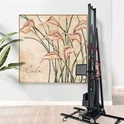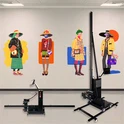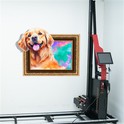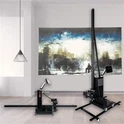Clean and protect painted areas
1. Choose a suitable location for your parking space painting.
Artists paint parking spaces on large visible surfaces. An easy surface to work with is a flat wall without many obstructions. The amount of wall space you need depends on the size of the wall paint you plan to create. Consider that you have access to the higher parts of the surface you want to paint on.
Dedicated painters do almost any surface job. Some painters prefer metal corrugations, bricks or even ceilings. A bumpy surface can give your parking space a unique texture.
If you don't own wall space, remember to get permission. If you own your own home, you are free to use your own home, but ask before you paint someone else's property or public space.
2. If you can't reach the entire wall, use scaffolding or ladders.
For most parking space painting projects, you need some kind of push to get to the top. Use a small ladder to get where you can't. If you need to go higher, put up scaffolding or rent an aerial lift. Many people rent scaffolding, which allows you to paint high places safely. If your paint surface is low enough, you don't need scaffolding. Stand and draw.
3. Wash the walls with soap and water to remove impurities.
Before you start, inspect the walls for damage, hard-to-wash stains, and other issues that need to be addressed. Any debris on the wall will show up in your work. Mix about 3 tablespoons (44 ml) of alkaline liquid laundry detergent or dishwashing liquid into a bucket of water and scrub the walls with a rag. Let the wall dry before you start painting.






